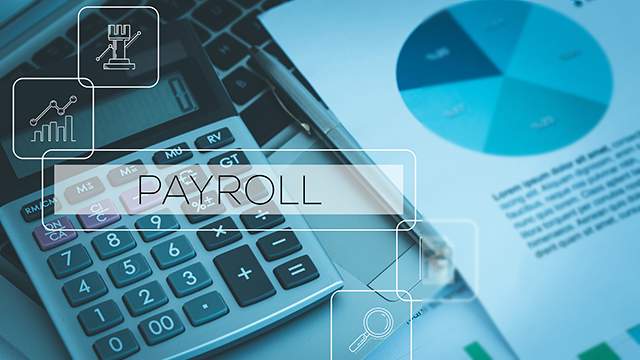Three New Payroll Tax Benefits for Businesses
By James (Jay) M. Brower, Jr. | Neil A. Sonenberg | May 20, 2020
Introduction
The CARES Act introduced several forms of relief designed to aid with employee payroll expense: the Paycheck Protection Program, better known as the PPP, and immediate tax relief in the form of payroll tax credits and deferrals. For businesses that have found themselves ineligible for PPP loan funding, including many in the real estate industry with 500 or fewer employees, these payroll tax incentives represent an alternative resource that can be of significant benefit as employers seek assistance to keep employees on payroll during the COVID-19 shutdown. Marks Paneth has been closely monitoring developments related to the PPP that can help determine if it is the right choice for your business. This article will examine the three types of payroll tax relief available to employers. Consulting with your tax advisor can help determine the correct strategy for your business.
I. Families First Corona Virus Response Act (FFCRA)
Employers who pay employees as part of an “emergency sick pay” plan, where the employees are not working from home in any capacity (via computer or otherwise), qualify for a credit if the employees are:
A. Sick as a result of COVID-19
B. Unable to work due to familial responsibilities including taking care of an elderly family member or a child home from school as a result of government closing
An employer who is paying an employee who was stricken with COVID-19 or believes he has come into contact with an individual who had COVID-19, and therefore has self-quarantined, would be entitled to $511 per day per employee credit against their FICA tax up to 10 days or $5,110, per employee.
An employee taking care of either an elderly parent or a child home from school, as a result of a government shutdown, would be entitled to a $200 per day credit for 10 days, up to $2,000 per employee.
Additionally, as a result of the prolonged school shutdown around the country, provided the employer continues to pay the employee as described above, the government will provide an additional maximum $200 per day, or $1000 per week, for up to 10 weeks. This translates to a maximum of $10,000 per employee ($200 x 5 x 10).
Based on the above, it is therefore possible for an employer to get the benefits of the additional $2,000 per employee plus the $10,000 as a result of the prolonged school shutdown maximizing to $12,000 per employee.
The employer must obtain in writing from the employee the request for emergency leave pay, detailing the reasons it is needed. This information should then be disseminated to the respective payroll company to synthesize into the quarterly 941 payroll tax returns, so that the employer gets the appropriate credits as soon as possible. The difference between the FICA due less the credit the employer is entitled to will either result in less FICA taxes to be paid to the government, or a refund to the employer.
It is important to note that payment of sick pay and/or family leave pay is mandatory for all employers with fewer than 500 employees. Employers with 500 or more employees are exempt. Employers with less than 50 employees may apply for an exemption from the requirement to provide family leave pay in certain circumstances. Also, employers who have received a PPP loan cannot count sick and family leave pay paid under the provisions of the FFCRA toward their PPP loan forgiveness.
Finally, FFCRA credits are also available to self-employed individuals. Self-employed individuals who are not able to work due to a governmental order, who have contracted COVID-19, who have been told to self-quarantine or who are unable to work because they are caring for a family member as a result of the pandemic qualify for FFCRA credits. It is important for self-employed individuals to document the number of days that they were not able to work during 2020. Their credits will be calculated and claimed on their 2020 Form 1040.
II. Employee Retention Credit
If your business has been fully or partially suspended as a result of a government edict during the calendar quarter, or your business has had a significant decrease in its gross receipts of at least 50% compared to the prior year’s quarter, then the government allows up to a maximum of a $5,000 credit for each employee against federal employment taxes. Such credit is calculated at 50% of an affected employee’s wages. Therefore, if an employee earns $10,000 or more between March 12 and December 31, the employer would be entitled to a credit of $5,000. This is the maximum the employer can get for 2020. This credit is a refundable credit, so if the total amount of credits exceeds the employer’s quarterly tax liability as reported on Form 941, the excess amount will be refunded to the employer.
For employers with more than 100 employees, the credit is available for any wages paid to an employee who cannot perform services for the employer due to a shutdown order limiting commerce, travel or group meetings. Recently the IRS released favorable guidance which provides that credits are available for payments made to employees who are on a reduced work schedule but for whom the employer still pays wages based on a workload which is higher than the employee’s actual workload.
For employers with 100 or fewer employees, the credit applies to all wages paid by the employer. However, employers should review recent IRS guidance on which employers are affected. Even though an employer’s business office may be closed due to a governmental order, if it is still able to function by having employees work from home, then the business may not qualify as one that is “fully or partially suspended,” and would instead have to rely on the gross receipts decline requirement in order to be eligible for credits.
Finally, employers who received a PPP loan are not eligible for employee retention credits. Also, sick pay and family leave pay paid under the FFCRA may not also be used to generate retention credits.
III. Payroll Tax Payment Deferral
There is a third and separate alternative that can be adopted in addition to the two mentioned above, which is a deferral of the employer 6.2% FICA tax or the equivalent amount of one’s self-employment tax. 50% of the deferred taxes are due at the end of 2021 and 50% are due at the end of 2022.
All employers qualify for this deferral, so if you haven’t done so already, you should contact your payroll service provider and ask that they start deferring payment of the employer’s share of FICA tax. If you have received a PPP loan, you qualify for deferral up until the time that your PPP loan is fully or partially forgiven. At that point, the FICA tax must be timely deposited on a prospective basis but amounts that were deferred up until that point remain deferred until the end of 2021 and 2022. Self-employed individuals should take the deferral provision into account when preparing their 2nd, 3rd and 4th quarter 2020 estimated taxes.
Conclusion
The PPP and payroll tax credits are both designed to help alleviate some of the financial hardship associated with keeping employees on payroll during this prolonged shutdown. Those businesses who have been unable to take advantage of PPP funding, or who choose not to, can feel some relief that employer tax benefits are still available to them. Some may choose payroll tax credits over PPP loans for strategic reasons, a decision which can be reached with the help of an experienced tax advisor. Those seeking to implement the above payroll credits should speak to their tax advisor to ensure that a business qualifies, and then to their payroll tax company. Be sure to also discuss keeping the proper documentation for these tax credits to avoid any obstacles in the future.
About James (Jay) M. Brower, Jr.

Jay Brower, CPA, is a Partner of corporate and individual tax compliance and research services at Marks Paneth, LLP. He has more than 20 years of professional experience at the federal, state, and local levels. Mr. Brower's duties also include the development of tax planning and implementation strategies, as well as education and development of the firm's professionals. Mr. Brower provides tax planning and compliance services to clients in the manufacturing, commercial fishing, telecommunications, professional... READ MORE +
About Neil A. Sonenberg
Neil A. Sonenberg, CPA, is the Co-Partner-in-Charge of Marks Paneth’s Real Estate Group. With almost 40 years in public accounting, Mr. Sonenberg excels in a wide range of tax and accounting disciplines. His “out of the box” thinking and passion provide clients with an array of planning opportunities to maximize both tax savings and profits. Mr. Sonenberg possesses expertise in all areas of real estate as well as wholesale and retail manufacturing and high-net-worth clients. He... READ MORE +




